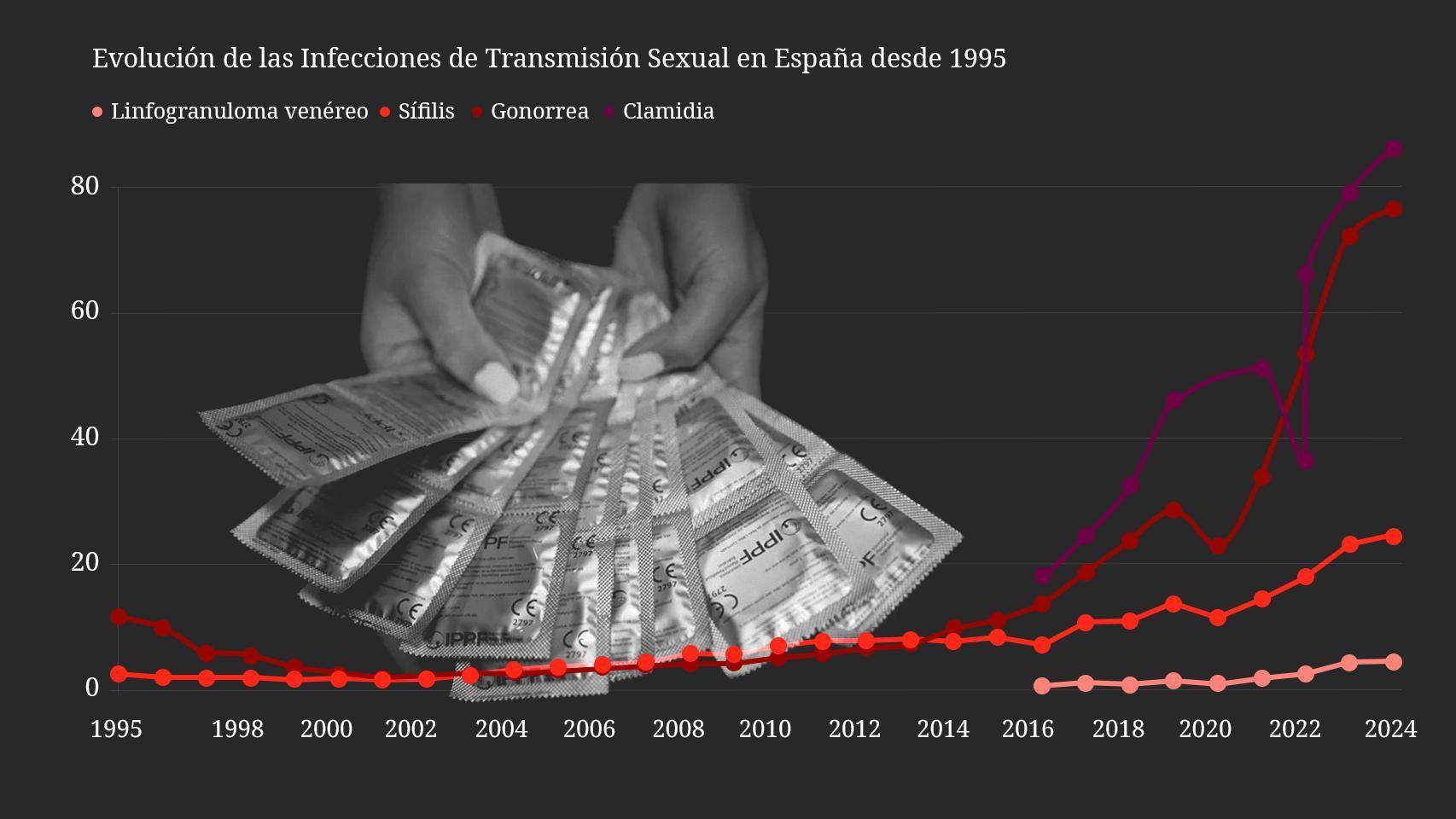A total of 93,101 cases of STIs were diagnosed in 2024, with the greatest impact among those under 25 years of age. Further information: Significant increase in STIs among the elderly: Prasat Temple will increase by 188% in just 4 years
Spain's deficits against Staris: They have risen by 440% in eight years, new report warns
In 2024, 93,101 cases of the disease will be reported, which will have a greater impact than the 25-year-old.
News: Get the expectial to be taken in the patients between the old adults
Sexually transmitted infections (STDs) continue to increase in Spain despite the 2030 goal of eliminating them as a public health problem through prevention, diagnosis and treatment.
The 2024 STI report of epidemiological surveillance published this Wednesday by the Carlos III Institute of Health (ISCIII) shows a 440% increase in cases since 2016.
Since that year, cases of Chlamydia Trachimatis and Lymphognuoma vaneluum have started to be reported in our country.Until then, syphilis and gonococcal diseases were recorded.
They have all surged in recent years, except for a decline in 2020 due to the COVID-19 pandemic.Two of the most well-known examples are chlamydia and gonorrhea.
The increase in both diseases has increased over the last decade.In 2014, 4,562 cases of gonorea were found, 10 years later there were 37,257, with a rate of 76.63 per 100,000 residents.
Chile's growth was similar, reaching 739,000 in 2015, up 41,918% from last year.
Syphilis has grown with an annual increase in frequency of close to 20% between 2021 and 2024.And so is lymphogranuloma venereum, although it has been recorded for a shorter time, with more than a thousand cases in eight years.
From impact diagnostics
Experts who consult El Esdañol in all cases of infection, the reason for the resistance is some metrism.
One of the conclusions given by Gema Fetherández Ruivas Soligamalo is infectious diseases and many problems.
With current methods, it is even possible to detect asymptomatic infectious diseases that were not favored ten years ago.
In addition, additional screening is carried out among those who may have higher risk factors.And those who receive PrEP (the pill that prevents the transmission of HIV) also undergo these tests.
But the increase is not only due to an increase in the number of cases. "It is related to a change in behavioral patterns," says Jordi Casabona, coordinator of the STI working group of the Spanish Society of Epidemiology (SEE).
It is also observed in men who have sex with other men and in the heterosexual population.“There is another exposure that makes it easier to transmit more effectively.”
There are several epidemiological studies that warn about how the risk of getting an STI doubles when you have unprotected sex.Added to this is the fact that they are always found quickly.
According to the latest survey carried out by the Spanish Contraceptive Association, the average life expectancy is 19.7 years for women aged 45 to 49 years, while it rises to 16.2 years for women aged 15 to 19 years.
The greatest impact, both in infection and chamydia, occurs in those under 25: Representing 22.6% and 354% of the cases that follow 2024.
War Juan Carlos Gallos Gallos, these people have behavior that makes him lose control, "like Juan Carlos Galán", is Juan Carlos Galán, the leader of the Purlopos Galán, the leader of all the Purlo de Ramón Y Camón Y Ka Madrid.
It is also aggravated by the fact that they cannot become chronic as is the case with HIV, which is actually experiencing a decline in our country.
Since there is no clear prevention mechanism, the solution includes "greater awareness among the population, especially the groups most vulnerable to the infection."
Asunción Díaz, researcher of the National Center of Epidemiology (CNE-isciii) and one of the authors of the above report, also remembers that they are infections that do not produce immunity, so there may be people who get infected repeatedly.
Its purpose is to review
Given the steady rise in STI cases, experts are asking the biggest questions about how to prevent it.
It is enough from the Sustainable Development Goals (SDG) that the goal is to achieve new infections of HIV and other Stas in 2030.
The strategic plan for the prevention and control of HIV and STIs in Spain, approved by the Ministry of Health in 2021, will update the country.
However, it aims to advance efforts to eliminate HIV and STIs as a public health problem by 2030.
Fernandez Rivas believes that this achievement is a "difficult challenge" and does not rule out the need to re-examine the defense plan.
Galvan also believes there is still room for improvement.And although they are still working, Spain continues to have international data that exceeds the European average in terms of sexually transmitted diseases.








